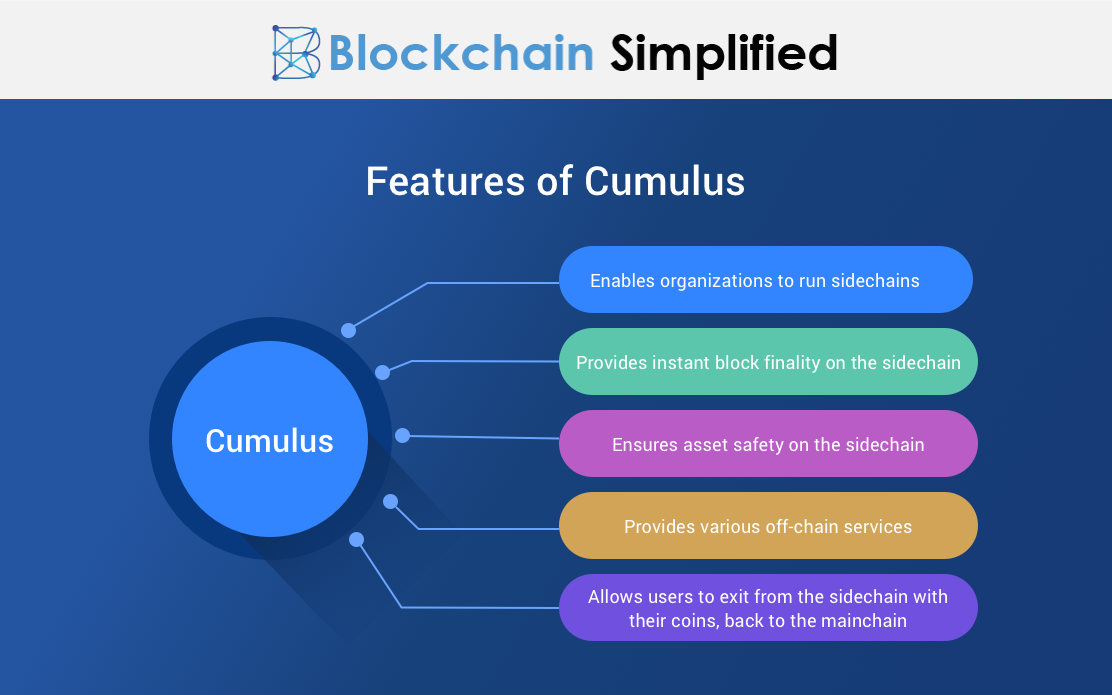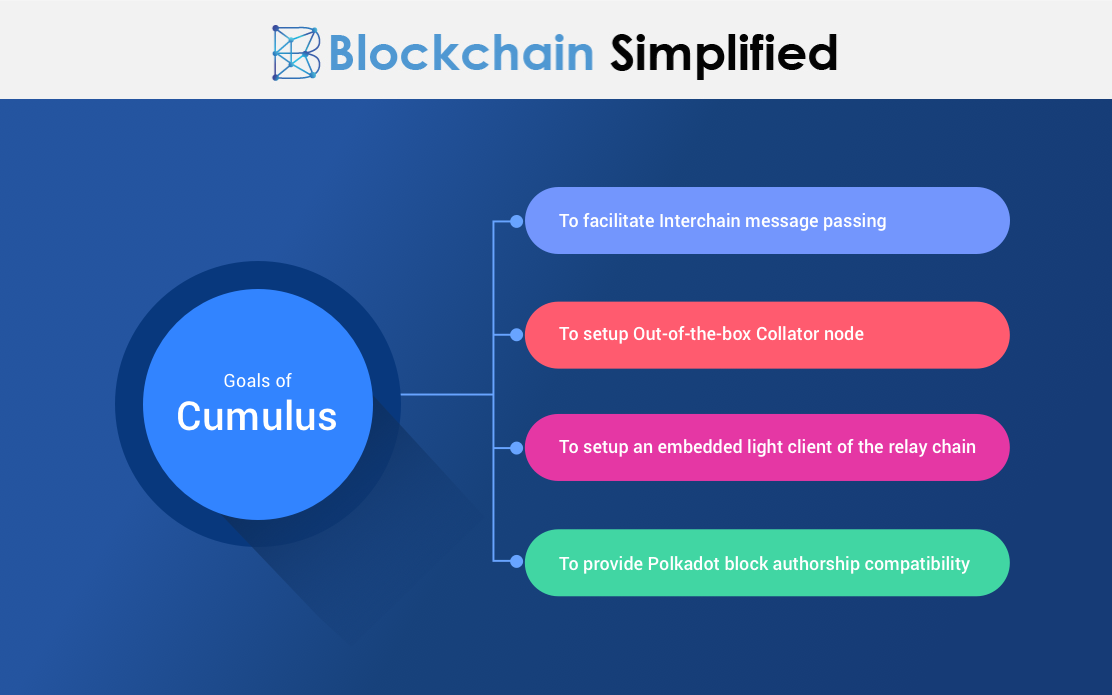Cumulus - A BFT based sidechain protocol for Off Chain Scaling

To tackle scalability and interoperability issues of Blockchain, Layer 2 Scaling or Off chain scaling solutions were introduced. We saw how Matic Network, Bitcoin Lightning and Ethereum Plasma solve scalability problems of blockchain by implementing a different blockchain layer called sidechains. Sidechains are basically blockchains on their own which perform many tasks and reduce the workload on the base layer, thus increasing scalability. But until now, sidechains performed secondary tasks and not actual block addition or validation since they were not allowed to execute consensus protocols to validate any block. They also relied on the main chain chain for security. But over time, sidechains have also been made ready to run consensus processes within themselves.
Today in this blog, let us learn about once such sidechain protocol called the Cumulus that not only executes consensus protocols but also is supremely efficient and a low-cost, secure sidechain.
(Visit us at https://blockchainsimplified.com to hire Blockchain developers. We are an offshore blockchain development company based out of Pune, India)
What is Cumulus protocol?

Cumulus is Byzantine Fault Tolerance based sidechain protocol built for implementing off chain scaling solutions. It was designed with the purpose of serving as an extension to the Substrate framework that builds parachains on Polkadot. Cumulus was created with the objective of making these Substrate built parachains compatible with Polkadot. Deploying these parachains on Polkadot is an easy process once Cumulus is integrated with Substrate. Cumulus is basically a tool - a set of libraries - that provides a ready consensus engine for Substrate. Parachains (created on Substrate integrated with Cumulus) can be ported to Polkadot with nominal changes - as little as adding a couple of lines in the code; since the consensus is already carried out on Cumulus.
The Cumulus sidechain is set up by deploying smart contracts that represent every validator on the network. When clients/users submit any transaction, then a designated validator for that particular epoch acknowledges it, executes it and collects them in a block with a forwarding message. The validator then broadcast this block to other validators. All the other validators validate the block and upvote it if they deem the block as valid. Once the block and the respective epoch validator receive sufficient numbers of votes, the block is added to the chain and the hash is committed.
The point where the hash is committed is recorded as a checkpoint. This checkpoint basically stores the state of the epoch. In event of any invalid checkpoint submission or absence of checkpoint submission even after receiving sufficient votes, the designated validator is challenged by others and is later penalized for non-submission. If a client or users sense anything amiss or ingenuine in the entire consensus process, they can immediately withdraw from the latest checkpoint.
Here are some features of the Cumulus protocol,
1) Enables organizations to run sidechains
2) Provides instant block finality on the sidechain
3) Ensures asset safety on the sidechain
4) Allows users to exit from the sidechain with their coins, back to the mainchain
5) Provides various off-chain services
Go through a detailed technical documentation of Cumulus to know more.

Components of Cumulus
1) Cumulus Consensus - As we read above, Cumulus Consensus is a consensus engine tailor-made for Substrate for creating parachains. When consensus protocols are executed on the off chain Cumulus network, the load on the main layer is automatically reduced to improve scalability.
2) Cumulus Runtime - Cumulus Runtime is a wrapper class that is used by the Polkadot validators in order to validate the Substrate runtime parachains.
3) Cumulus Collator - A repository to implement Polkadot parachain collators.
Go through this extremely detailed article on Cumulus consensus protocol that explains all the whats and hows of the Cumulus sidechain.
About Blockchain Simplified
Blockchain Simplified is a Top blockchain development company in Pune - India which works on all major Blockchain requirements. We specialise in Blockchain, Web and Mobile development (One Stop Shop for all technology development needs).
Our clientele includes Multiple Funded Start - Ups, SMBs and few MNCs few of which are NASDAQ and NSE listed.
Some of our work includes,
Blockchain based-
hubrisone.com - is a Live app with 100,000+ downloads, All-in-One Cryptocurrency current account. The entire development from scratch carried out by Blockchain Simplified.
All in one Platform - Complete responsibility of entire software development of the platform ,for a $1m funded blockchain start up, led by a team of serial entrepreneurs and tech veterans in Silicon Valley.
Well funded Blockchain startup - Blockchain Simplified helped a $6m funded American Blockchain startup to build the first blockchain protocol to leverage on-chain smart contracts to manage distributed storage of application data off-chain.
Multinational Bank - The company helped one of the top 3 ranking Multinational Banks to integrate various cryptocurrencies into their banking application.
and more…
Non-Blockchain-
SHC - Built entire platform and app from scratch for a $1m funded startup led by a team of Americans including PhD degree holders.
VMW - Developed app for a multi-national company providing mass factory-to-factory shipment services. App is being used by 53 of the Fortune 500 companies such as John Deere, Coca-Cola, Nissan.
and more…
Expertise
Blockchain Development : Bitcoin, Ethereum, Hyperledger, Corda, and more.
Mobile App Development : Android Native, iOS Native, React Native, Flutter, Xamarin.
UI/UX Design : Strategy, Planning, UI/UX Design, Wireframing, Visual Designs.
Web App Development : Node.JS, Angular, React.JS, PHP.
Backend Development : MongoDB, MySQL, AWS, Firebase.
Visit our official website https://blockchainsimplified.com/ for more information